
Philadelphia’s Magic Gardens is the brainchild of an American artist called Isaiah Zagar. The place is aptly titled, given its pervasive magical quality. It feels like stepping into someone’s mind. Every time you look at it, you see something different. Truth be told, you have to avoid looking for patterns and just accept the chaos. However, there are some common materials that Isaiah uses: mirrors feature heavily as well as bicycle wheels, ceramics and colored glass, in particular glass bottles, whose green and blue hues capture the sun to great effect. All in all, it creates a feast for the eyes that will continue to fascinate you long after you have left.
Isaiah Zagar was born in Philadelphia in 1939 and raised in Brooklyn. Isaiah (he prefers to be known by his first name) received his BFA in painting and graphics from the Pratt Institute of Art in New York City. He credits a ground-breaking exhibition in 1961 in the Museum of Modern Art in New York called “The Art of Assemblage” as his inspiration for making the city of Philadelphia into a labyrinthine mosaic museum”. During the 3 years he spent in the Peace Corps in Peru with his wife, Isaiah was very inspired by Peruvian folk art and his work often depicts himself in traditional Peruvian attire.
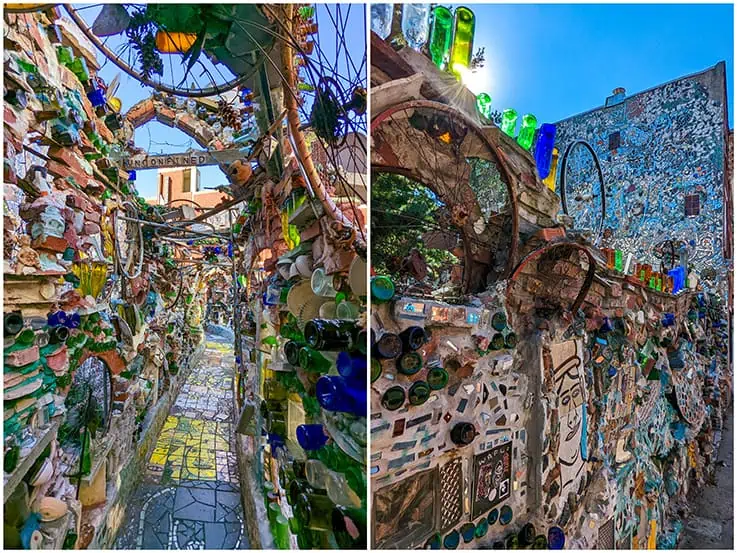
Glass bottles, bicycle wheels and mirrored tiles in abundance
photography by: The Brownes
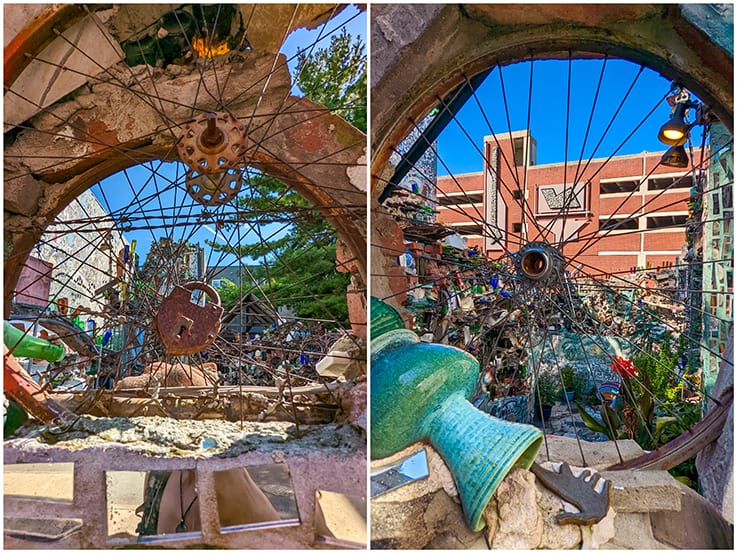
An alternative view of life through a wheel
photography by: The Brownes
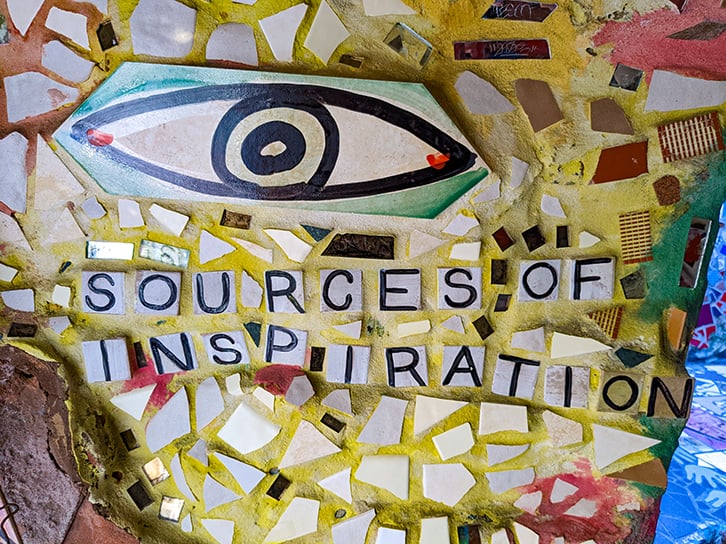
“Sources of Inspiration”, of which Isaiah has many
photography by: The Brownes
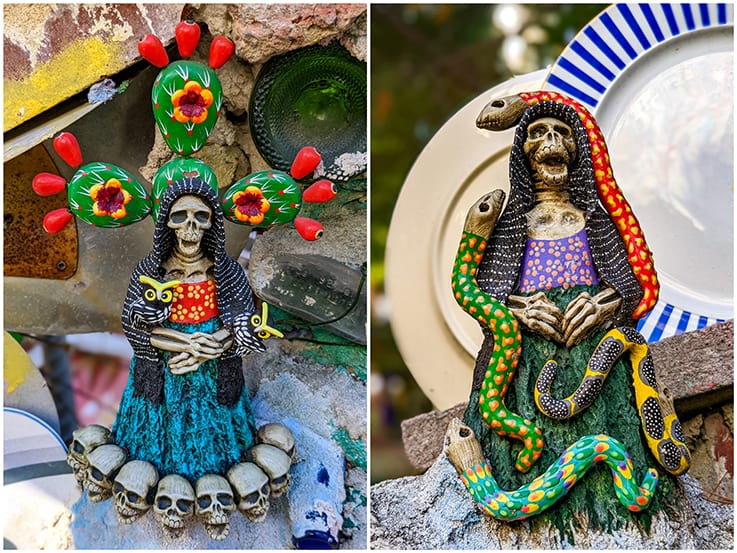
Cultural icons are one of Isaiah’s many inspirations
photography by: The Brownes
The couple moved to South Philadelphia in 1968 but Isaiah suffered a nervous breakdown shortly after arriving back to the US. An essential part of his recovery was to begin making mosaics around this area of the city, allowing him to develop his self-expression and create his own visual language. His first project was opening the Eye’s Gallery, a folk art shop, where he created his first mosaic in December 1968. Unfortunately, the Eye’s Gallery was damaged by a fire in a neighboring shop in July 2022 and work continues to recover and restore iconic pieces in the gallery.

Demonstrating Isaiah’s love of folk art and mirrored tiles
photography by: The Brownes
Isaiah began work on the site of the Magic Gardens in 1994. In 2002, the owner of the lots requested US$300,000 for the land, an extortionately high price for land in this area at this time. In the end, community support saved the property and the non-profit Philadelphia’s Magic Gardens was formed. Today, the Gardens showcase Isaiah’s own work as well as pieces from other artists, who are named in the mosaics; e.g., Jorge Wilmot, a Mexican ceramicist whose tiles are abundant in Isaiah’s work. Folk art still prevails, with cultures from all around the world incorporated in Isaiah’s creations.
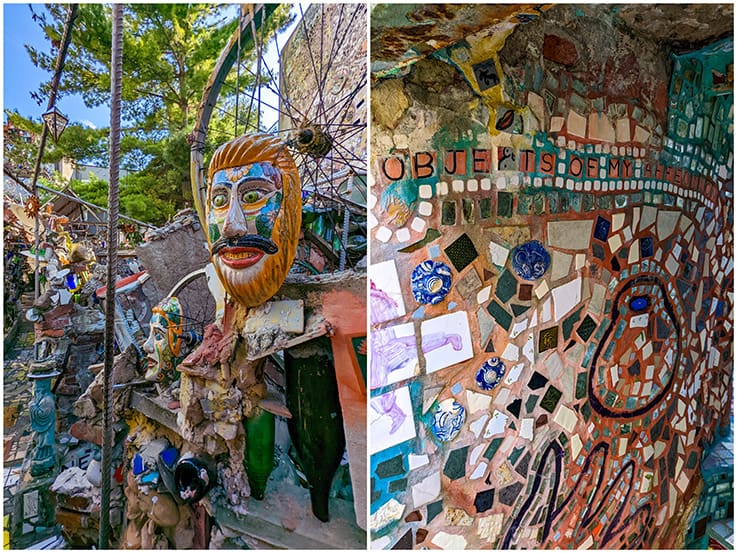
Some of the many contrasting walls of Isaiah’s Magic Gardens
photography by: The Brownes
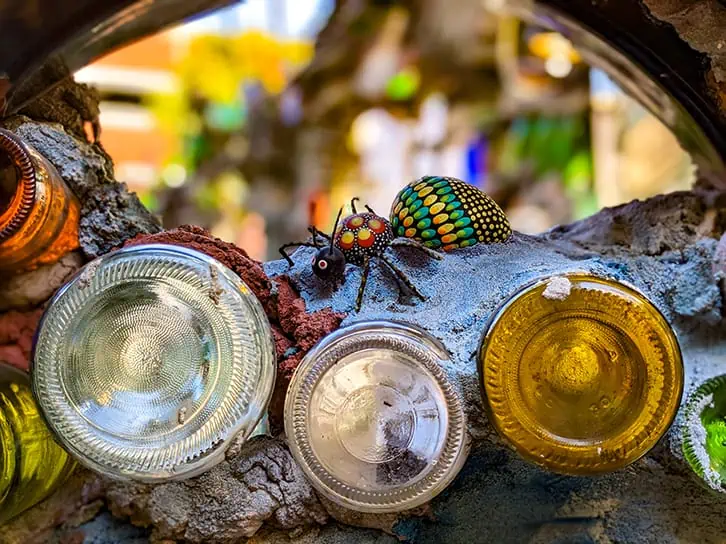
There are many little details to appreciate in the Magic Gardens
photography by: The Brownes
Because the majority of the Magic Gardens are outdoors, time and weather have taken their toll on some parts of the exhibition. Restoration has been carried out in a few areas where the grout holding the mosaics together had begun to crumble. Newer parts of the exhibition can be identified by how colorful the grout is while the older parts are far more faded.
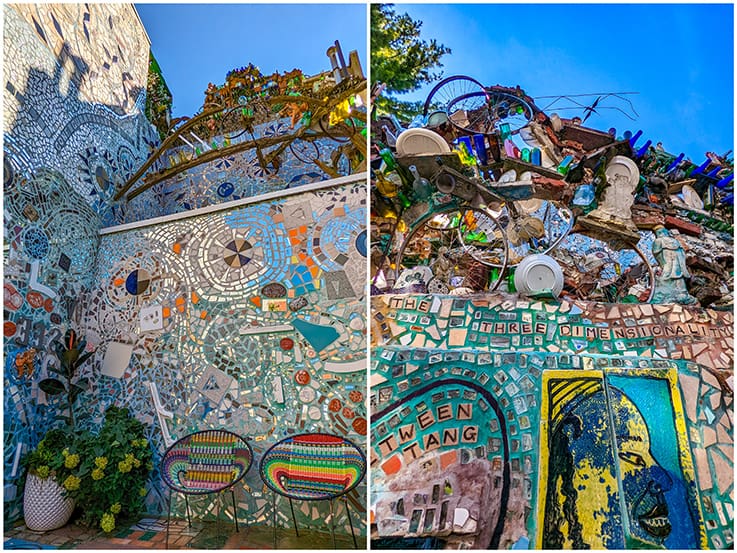
On the left, deterioration in the colors can be seen higher up on the wall while on the right, this has been partially restored
photography by: The Brownes
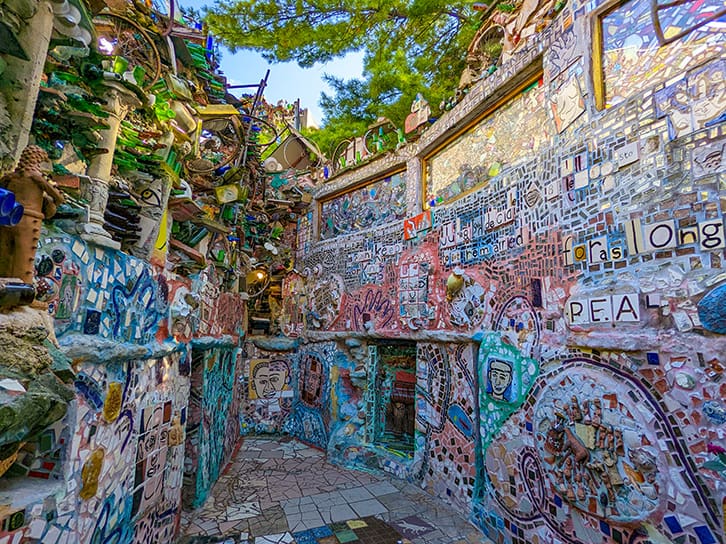
Restoration work is complex given the scale and construction of the Gardens
photography by: The Brownes
The interior part of the exhibition shows how striking all Isaiah’s masterpieces would be, were they not subject to environmental erosion. The vibrancy of the mosaics indoors is stunning – especially considering that Isaiah has no real formula for making the colored grout. He uses chemical dyes in varying proportions and judges by eye if the color is to his liking.
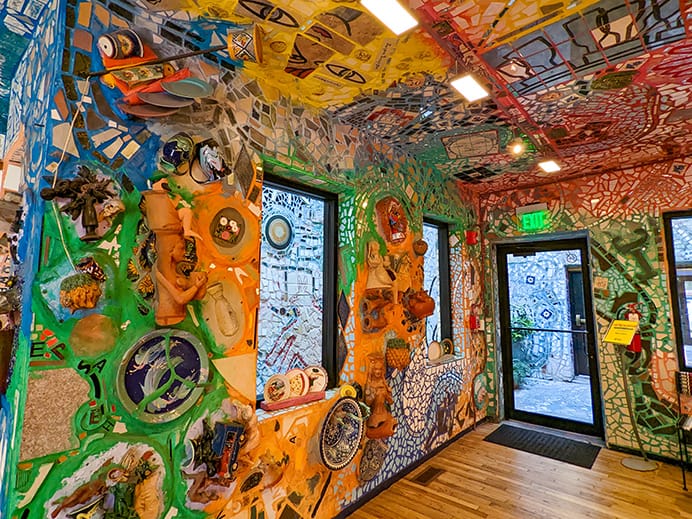
The interior of the exhibition: note the vibrancy of the colors as they are protected from the elements
photography by: The Brownes
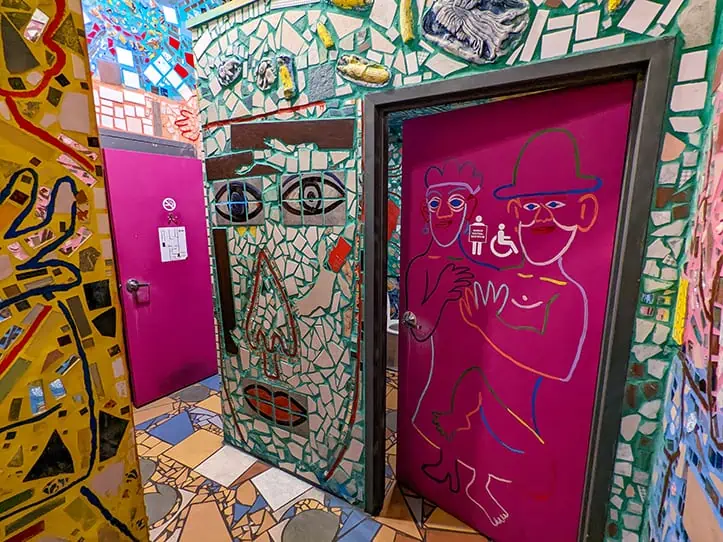
Even the toilet walls are mosaicked!
photography by: The Brownes
One of the most amazing things about Isaiah’s mosaics is that he does not sketch them in advance. He paints the shapes that he sees in his mind onto the walls and then uses a bucket full of materials to make the mosaics. He doesn’t believe in trying to place each piece perfectly but rather improvises as he goes along to create the final product we see today.
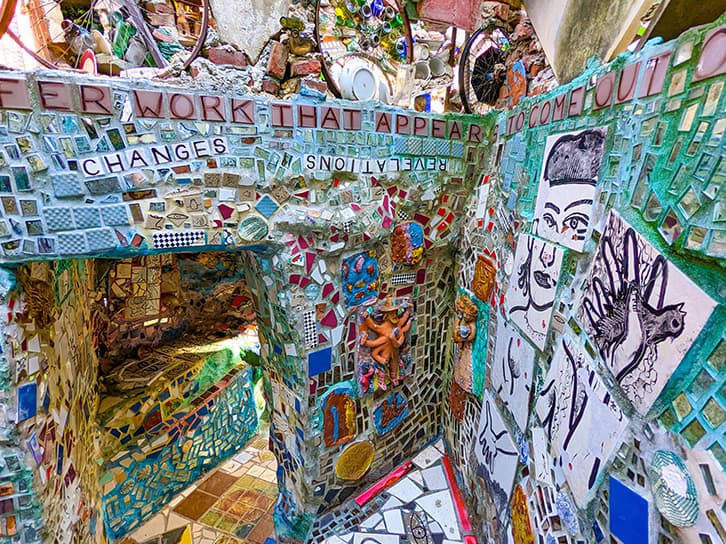
A small corner of Isaiah’s work
photography by: The Brownes
Aside from the Magic Gardens, it is estimated that there are around 300 mosaic murals, both indoor and outdoor, around the South Philadelphia area created by Isaiah and he continues to work as well as teach other artists his techniques so that they can carry on his work. There is even a film about Isaiah called “In a Dream“, directed by his son, Jeremiah Zagar.
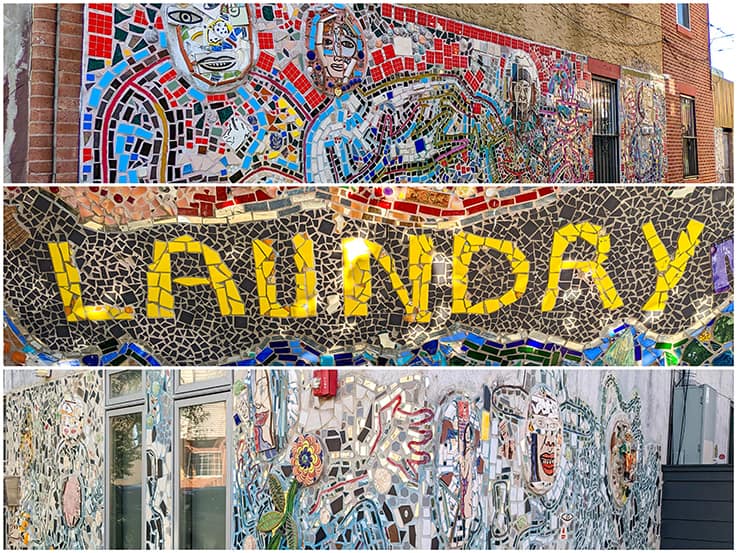
Examples of Isaiah’s other mosaics around South Philadelphia
photography by: The Brownes
Upon leaving the Magic Gardens, it has a lasting impact in that you start to see art in everyday objects all around the city – and to notice the mosaics sitting on obscure street corners that seem to appear out of nowhere. You start to appreciate the color and details that daily life has to offer us and while we may not all have Isaiah’s artistic flair; we can certainly take the time to try to see the world a little differently.
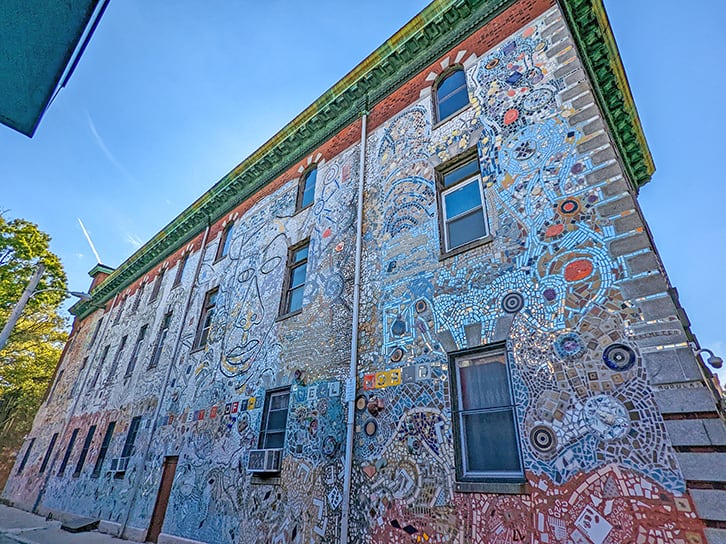
One of the exterior walls, showcasing the detail in Isaiah’s work
photography by: The Brownes
There is a prominent quote featured in Philadelphia’s Magic Gardens that, in true Isaiah Zagar fashion, describes the place better than I ever could: “The painter as portrayed by himself, must not be reduced to a subject of history, but must be shown, by his/her pictorial gaze, to be individual & timeless”. Given the lasting impression that the Magic Gardens had on me, I believe Isaiah has truly succeeded in this particular endeavor.
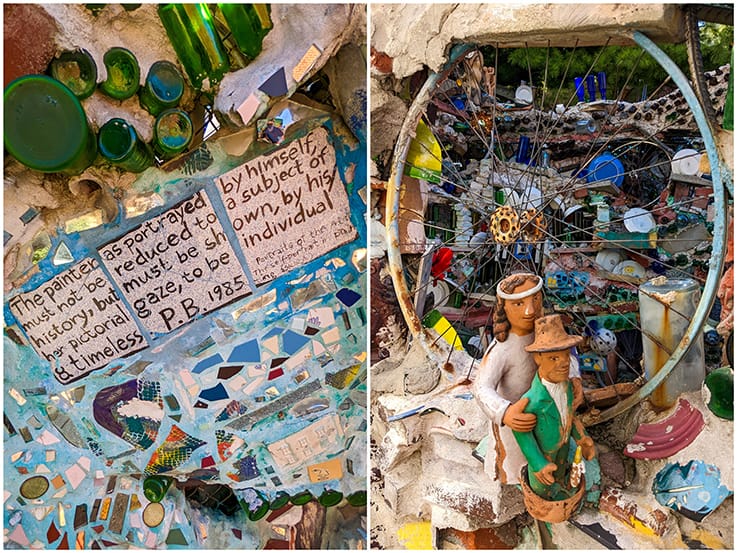
A thought-provoking quote and one of the artist’s many “self-portraits” embedded in the walls of the Magic Gardens
photography by: The Brownes
The Magic Gardens are located at 1020 South Street, Philadelphia, PA. They are open every day except Tuesday from 11am to 6pm, though hours may vary on national holidays. Admission is $15 for adults, $12 for students / military / seniors, $8 for children aged 6-12 and free for children 5 and under. A special rate of $2 is available for ACCESS cardholders.
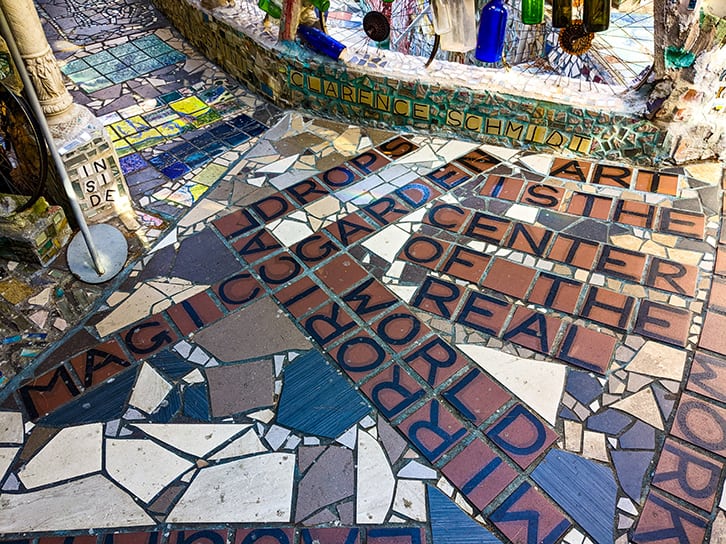
“Art is the Center of the Real”, a favorite expression of Isaiah’s
photography by: The Brownes
We are Sinéad and Adam, an Irish couple with an insatiable appetite for travel. After 6 months exploring South America in 2012, we subscribed to the corporate world for a few years to replenish our travel funds. In 2019, we packed our lives into backpacks once again and we travelled around South East Asia and Turkey extensively, including an 8 month stay in the Philippines at the height of the first wave of the COVID-19 pandemic. While the world was locked down, we focused on building our savings to give us the freedom to travel again and in 2022, we explored Southern Europe before heading to the US and Central America, where we are currently. Always up for an adventure!
Visit our Instagram page for more content.
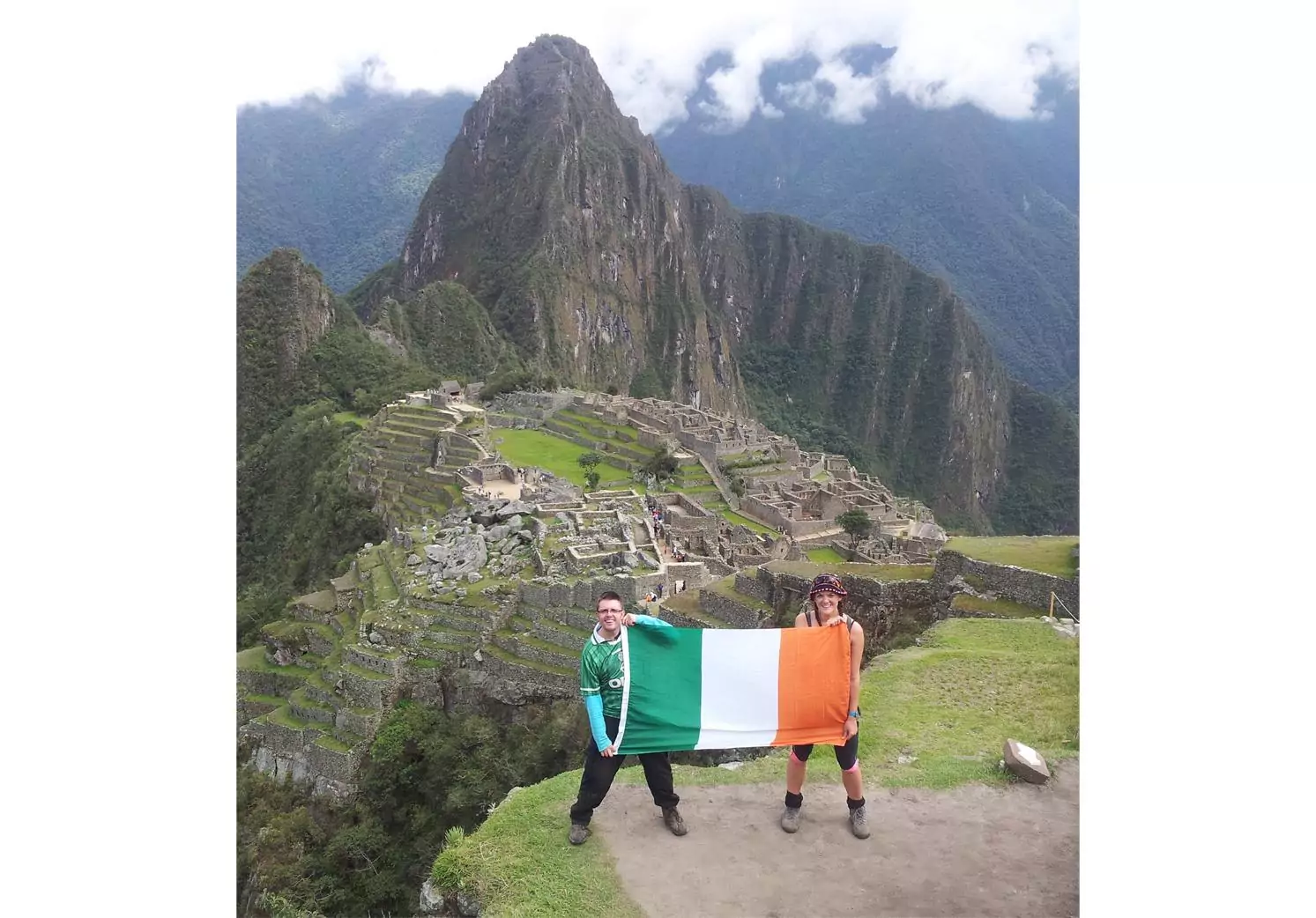
photography by: The Brownes